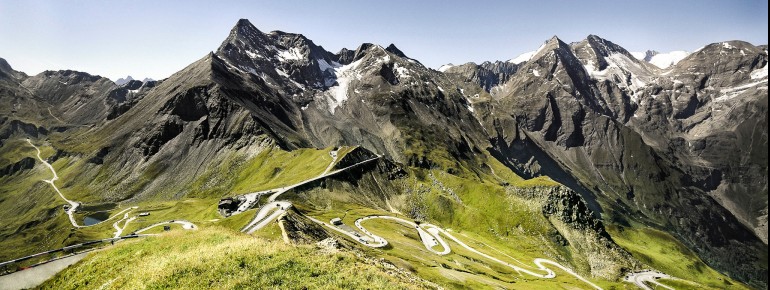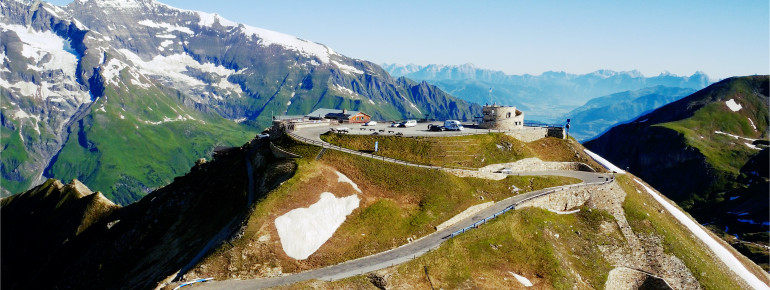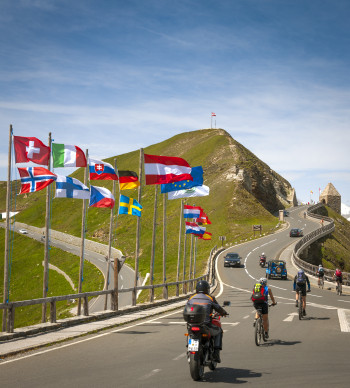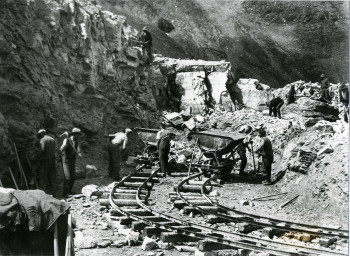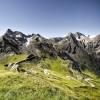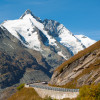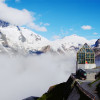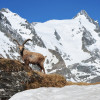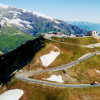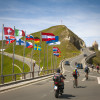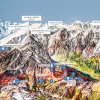Contents
Description
In the heart of Europe, you will find one of the most scenic passes: the Grossglockner High Alpine Road. The road leads its 900,000 visitors up to the Kaiser-Franz-Josefs-Höhe over 48 kilometres and 36 hairpin bends. On the way, you'll find museums, mountain inns, a viewing platform, visitor centres, and breathtaking scenery. The Grossglockner High Alpine Road is also suitable as a starting point for numerous hikes and walks.
With its 3,798 metres, the Großglockner is the highest mountain in Austria and is part of the Hohe Tauern National Park. Due to its size, it towers above the other 3,000-metre peaks and offers a unique panorama on the High Alpine Road. Among other things, you have a magnificent view of the eight-kilometre-long Pasterze, the longest glacier in the Eastern Alps.
The High Alpine Road is a toll road that runs from Futsch-Ferleiten in Salzburg to Heiligenblut in Carinthia. You can drive over the pass on both sides with your own car, as an ambitious (racing) cyclist or on a motorbike. The pass has a smooth road surface and even reaches 2,571 metres at its highest point, the Edelweißspitze. In addition, a shuttle bus is offered from the ticket office in Fusch. Tickets are available at the ticket offices in Fusch and Heiligenblut, as well as online. Due to the winter closure, the High Alpine Road is not accessible from 1 November to the beginning of May. For those who don't want to wait for the opening, a multimedia guide with a virtual tour is available in the Locandy app.
On the 48-kilometre route, so-called "points of interest" point out all the sights and worlds of experience. A total of twelve different worlds of experience are offered. They range from playgrounds, information points, museums and vantage points to exhibitions, circular hiking trails, a memorial for the workers who died in the accident and a small lake, the Fuscher Lacke. The crowning achievement is adventure world number 11, the Kaiser-Franz-Josefs-Höhe at 2,369 metres, from which you can enjoy a stunning view of the Großglockner, the Johannisberg, and the Pasterze.
On site, you can also visit the visitor centre with special and art exhibitions, as well as the Swarovski observatory. Between mid-July and the end of September, a free guided tour is offered daily at 10:30 am and 1:30 pm by the Hohe Tauern National Park. Registration is not required in advance.
Historical Information
The construction of the Alpine Road began on 30 August 1930 with the blasting of the Alpine Road. Almost exactly five years later, on 3 August 1935, the Grossglockner High Road was ceremoniously opened. Besides unemployment in the country, this Hercules project was also motivated by the emerging tourism industry. In addition, Austria was looking for an identity project after the fragmentation of the First World War. The aim was to create jobs, as well as revenue from tolls and holiday stays. Unfortunately, some workers lost their lives during the construction of the pass. At the Fuscher Törl, a memorial commemorates them today. The High Alpine Road quickly gained in popularity, especially as the years of the economic miracle spurred motorization and thus ownership of one's own car.
Until 1953, the road was shovelled clear by hand by 350 men for almost 70 days every spring. But since individual snow depths could be as high as 20 metres, work was done on developing rotary ploughs. These motorized vehicles are still in use every year. Meanwhile, they support the workers so well that it only takes twelve full-time workers and 25 days for the pass to be issued. Exhibitions and museums display all these development processes from construction to today.
How to get there
The Grossglockner High Alpine Road can be visited by car, motorbike or bicycle and by public transport in combination with a shuttle bus.
From the North (Salzburg/Bavaria)
- By car from Salzburg, it takes about 1.5 hours to reach the ticket office in Fusch.
- By public transport, travel to Bruck or Zell am See railway station in Austria and then continue by postbus to the station Kassenstelle Ferleiten / Wildpark Ferleiten.
- From Salzburg or Bavaria, i.e. the north side of the pass, there is the possibility of booking a day trip with the Glocknerbus. This is from Hinterglemm, Saalbach, Zell am See, Bruck and Fusch.
From the South (Carinthia)
In Carinthia, the toll station is called "Heiligenblut". You can get there by bus and train from Lienz station in Austria. A postbus then runs from Heiligenblut to the Kaiser-Franz-Josefs-Höhe and back again.

